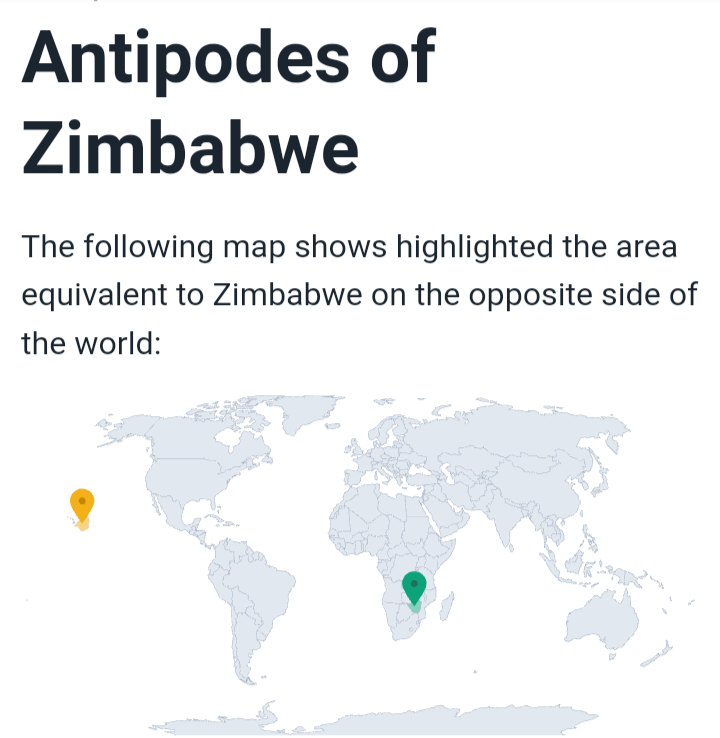Is it now the norm to make the term WiFi synonymous with the term cellular/mobile data (or 4g/5g)
They are not the same thing.
Is this like when people call tablets ipads? Or call vacuums hoovers/dysons.
Maybe someone has a router down there
Stone age people probably. Or a bear.
Well, that sort of highlights my issue and why i assume they meant mobile data. If they are, in the joke, connected to WiFi, then they wouldn’t be surprised by the signal strength. Because they are near a router and therfore the signal is good enough to use. You aren’t typically able to connect to WiFi if the signal is below -70 -80 decibels.
I think its fairly clear that they meant mobile data as this is something you would be surprised to still have if you were lost in a cave.
Not that i wouldn’t be surprised to find WiFi down there, just that i wouldn’t be surprised by the strength of the WiFi signal if i was standing close enough to a router to see the SSID.
Well now that we’ve thoroughly analyzed the joke to death…
Well, it wasn’t the best joke to begin with. I doubt anyone gave it more than a …ha… when they read it.
Do you?
Did you?
I bet you’re every comedian’s favorite heckler at the comedy club.
It’s a joke, not a cock - don’t take it so deep. If it’s not funny, glance over it and move on. Like Don Quixote tilting at mediocrely humored windmills.
Hey, fair enough, dont really heckle comedians. Its their show, unless its something they actively seek in their audience, i wouldn’t think about it.
I didnt mean to over analyse the joke, i just asked a question about the synonimity of WiFi and mobile data and was challenged on the intent behind the use of the word WiFi, so i responded with my take on what was intended. It wasn’t to ruin the joke. It was to validate my question about the use of WiFi when i believe they meant mobile data.
Frankly you are the one who made it about ruining the joke.
It’s like calling all fuel diesel.
I think they specifically mean Wi-Fi, not confusing it with cellular.
I would be surprised too if I went into a cave and suddenly my phone is connected to Wi-Fi. Where are the access points? Who is running internet all the way out here? I don’t see any telco boxes or signs of a human presence. Why do the speeds get faster the farther I go? Why did my phone connect to some random network when I specifically told it not to do that? It would be even weirder if it’s WPA3 protected or something because I obviously don’t have the password for the cave Wi-Fi
I’d say these examples are different, more like Kleenex where brand names become the common term. This is more like when parents used to buy a Wii game for your “playbox station”.
I know people who don’t know what an Ethernet cable is.
Internet = wifi / mobile data. And that’s it as far as they are concerned
Routers, modems, switches, bandwidth, Ethernet etc. That’s all just mysterious mumbo jumbo nerd shit. They only know that wifi = the symbol on their phone and that it makes their apps load. It’s crazy.
This is my wife.
She calls mobile data “wifi”
She calls the internet “the wifi” when talking about our specific connection. “is the wifi bill paid yet” even when talking about the internet on my ethernet connections, it’s still “the wifi”
Also “10G” as a shorthand for DOCSIS 4.0.
There is a term, that I am too lazy to search, that when a brand or technology is so widespread or used, that the name of the brand or technology becomes the word used to describe anything that ressemble that brand or technology.
Wi-Fi and iPads are definitely some of those.
Is it ‘ubiquitous’?
Someone finish the creepypasta this is begging to be the start of.
Item #: SCP-███
Object Class: Euclid
Special Containment Procedures: SCP-███ is to be contained within a secure research facility located in ████████ National Park. Access points to SCP-███ are to be monitored, and unauthorized entry is prohibited. Exploration of SCP-███ is restricted to Level 3 personnel or higher, equipped with GPS tracking devices and standard exploration gear. Psychological evaluation is mandatory for all personnel before and after exploration.
Description: SCP-███ is a cave located within ████████ National Park, with an entrance disguised as a natural rock formation. The interior of SCP-███ exhibits anomalous properties, including the presence of a WiFi network with fluctuating signal strength.
The WiFi network is broadcasting from within the cave,m and has no identifiable source. The signal strength increases the further one ventures into the cave, peaking at approximately 200 meters below the surface. GPS devices and compasses malfunction within SCP-███, and individuals may experience disorientation and temporal distortion.
SCP-███ was discovered by a hiker (Subject-███-Alpha) who became lost approximately 1 hour after entering the cave. The Subject utilized a smartphone equipped with a signal strength tracking application to navigate SCP-███. They failed to return, prompting Foundation intervention.
Efforts to locate Subject-███-Alpha within SCP-███ have been unsuccessful. Further exploration and research into SCP-███ are ongoing to understand its anomalous properties and potential hazards.
Good one - [email protected] - Just in case you want to post more 😆 👍
Thanks, looks interesting, will take a look
AI attempted it:
Title: The Signal in the Abyss
In the heart of a dense forest, nestled between towering trees and hidden beneath the earth, lay a cave. It was rumored to be bottomless, its depths shrouded in mystery and whispered tales of the unknown. Many dared not venture into its darkness, fearing the unknown that lurked within.
One fateful night, Mark, an adventurous soul with a penchant for exploration, decided to defy the warnings and delve into the depths of the cave. Armed with only a dim flashlight and his smartphone, he stepped cautiously into the yawning mouth of the cavern.
As he ventured deeper, the darkness enveloped him like a suffocating blanket. The beam of his flashlight struggled to pierce through the thick shadows, casting eerie shapes upon the damp walls. Yet, despite the oppressive darkness, Mark noticed something peculiar – his phone’s signal strength was steadily increasing.
With each step he took into the abyss, the bars on his phone climbed higher, until he was met with a full five-bar connection. Astonished, Mark paused to check his phone, expecting to find some rational explanation for the sudden surge in signal strength. Instead, he found himself greeted by a stable internet connection and lightning-fast WiFi speeds.
Intrigued by this bizarre anomaly, Mark pressed on, his curiosity overriding his sense of caution. The deeper he ventured into the cave, the stronger the WiFi signal became, until he found himself in a chamber bathed in an otherworldly glow.
Strange symbols adorned the walls, pulsating with an ethereal energy that sent shivers down Mark’s spine. Yet, amidst the eerie ambiance, his phone continued to buzz with notifications and messages, as if beckoning him further into the unknown.
Driven by a mix of fascination and fear, Mark pressed on, his footsteps echoing through the silent chambers of the cave. But as he ventured deeper, he began to notice subtle changes in his surroundings – whispers echoed through the darkness, and shadows danced just beyond the reach of his flashlight.
Despite his growing unease, Mark was determined to uncover the source of the mysterious WiFi signal. But as he rounded a corner, he stumbled upon a sight that froze him in his tracks.
Before him stood a towering figure, its form shrouded in darkness. Glowing eyes peered out from the shadows, fixating on Mark with an intensity that sent a chill down his spine. Yet, despite the fear that gripped him, Mark couldn’t tear his gaze away from the figure.
In a voice that seemed to reverberate through the very walls of the cave, the figure spoke, its words dripping with malice.
“Welcome, traveler, to the heart of the abyss. You seek the source of our signal, but know this – once you have crossed this threshold, there is no turning back.”
With a sinking feeling in the pit of his stomach, Mark realized that he had stumbled upon something far beyond his comprehension. But before he could react, the figure lunged forward, its outstretched hand enveloping him in darkness.
And as Mark’s screams echoed through the depths of the cave, the WiFi signal continued to pulse, a beacon of light in the heart of the abyss, beckoning others to venture into its depths, never to return.
That… sounds like half the /r/nosleep stories I’ve read except it didn’t take 10 months of drawn out exposition and cliffhangers
lol, almost worth a read. Almost.
When you come face to face with an armed guard and the large steel door of the bunker that he’s protecting, just let him know it was the Wi-Fi leading you there.
That’s why everybody shows up.
Interstellar, Fallout, or something else?
Probably SCP. There’s a file for everything in there.
Speed test to 127.0.0.1
How the hell did you get my address
Hey, it does not work me, getting
ERR_CONNECTION_REFUSED. Do you have an alternative site I can check speed to myself? Thanks in advance.Yeah just turn your eyes all the way around so that they’re looking at your brain, that should do it
I did that, but there’s nothing but empty space. Is there a special technique?
He’s about to reach the secret core control room.
Hell has the best wifi because it doesn’t give a fuck about FCC regulations.
Except that would mean awful wifi. FCC regulations stop ISPs for selling a worse product for more money to people with little to no choice in providers.
That’s definitely true, and a good point to make. But yeah, the joke was that wifi signals can be stronger if they aren’t limited by the FCC’s radio power limits.
wifi signals can be stronger if they aren’t limited by the FCC’s radio power limits.
I’m no radiologist (and video didn’t kill me), but I’m pretty sure that radio waves tend to struggle underground…
Nothing a bit more wattage can’t fix
The routers antennas probably fit well into hells surroundings with their soft, reddish-white glow
Or Covid /s
As a network specialist, I have a very different take on this. Why does your wifi at home suck so much?
You’ll almost always get faster bandwidth on cellular, unless you have fiber to your home it’s hard to compete with the available bandwidth on a commercial network, unless you’re in an underserved and over-populated (device-wise) area, your cellular speed should, in most cases, far exceed your available bandwidth at home, but your home WiFi shouldn’t suck. You should get, or at least approach speeds up to 1Gbps (or whatever your internet is capable of) on wifi.
A huge problem with it that I’ve observed is that people treat wifi like a huge truck, they just dump everything on it and that’s it. It’s not a big truck, it’s a series of tubes… Wait, that’s another thing… What I’m trying to say is that wifi is half duplex, like… a walkie talkie. Only one person can talk at a time. With WiFi, each “person” (device) that “talks” (transmits) can do so at incredible speeds, so the channel is free sooner… Unlike with a walkie talkie, when Timmy just won’t let go of the talk button… You can’t hear anyone when you hold that button Timmy. Let it go when you’re done talking.
Anyways, networks have a lot of stray, not useful (in terms of data throughput) traffic on it. Usually broadcasts (stuff sent to everybody) that should be sent to only a few devices. So there’s a kind of static in the background that takes away from your bandwidth. The more devices you have, the more background noise there is on the network.
This is a problem when smart devices are all wifi based. There’s ZigBee and zwave and others, but there’s a large number of “smart home” devices which are WiFi. Imagine installing 20 lightbulbs which are all smart wifi bulbs, onto a network. That’s a lot of static being added; and that static will reduce your wifi speeds.
That’s just one example of many. More devices = slower wifi. Thus my motto with WiFi and devices is: use a wire when you can, use wireless when you have to. A good example of this in practice is… When was the last time you moved your TV? You know, the smart TV with Netflix and everything built in… Exactly. So why is it on the WiFi? It never moves, there’s no need for it to be wireless. That’s an easy example of, why not just run a wire to it once, then never think about it again. Copy and paste to desktop PCs which are on wifi, and set top boxes, etc.
Switching from wifi smart/IoT devices to ZigBee or zwave will also help…
The other point I would make is: throw out your all in one router. Yeah, the WiFi router you bought from Amazon/best buy/radio shack/whatever. Throw it right in the garbage. Buy something that doesn’t suck. An easy option is ubiquiti. Put wireless access points in and use ethernet to connect them to the network. No mesh bs, or anything. You’ll improve your wifi signal and wireless devices will be able to load balance across them. I have a space that’s about 800 (ish) sq ft. I have two access points. One covers the space easily… I still have two. Why? Because load balancing. So when someone is pulling a lot of bandwidth on an access point, the other is right there, in range, ready to take everything on that needs more bandwidth than the small amount left after that one demanding device has taken what it needs. The situation is great, I never have WiFi related slow downs and all of my devices can easily consume all of the available download from my ISP, and my firewall/router/gateway, does the load balancing for the internet connection.
“But it costs so much!”, I hear you say. Well, how much do you spend per month on your internet service? $50? More? And you don’t want to spend even $100 on a router, which will last years when you’re spending $50/month on service? What kind of a fool are you? You’re getting what you pay for. The $65 Netgear wifi router is going to struggle. Especially after a little while. Ubiquiti has put out several, recent, and inexpensive options recently for home use. There’s the UDR, UX and UCG-Ultra for starters, ranging from $150-$200 (ish). You don’t need the $400+ UDM Pro. Add a small switch and a couple access points and you’re up to maybe… $500? That’s the same as 10 months of internet. So for less than one year of what you spend to get access to the internet, you’ll have a system that doesn’t suck and will probably last 5+ years. If you factor that out, it’s less than $10 a month. Cheapskate. You spend more than that on coffee in a week. Shut up.
TL;DR: your shit sucks. Do better.
WiFi and ZigBee can interfere with each other as well since they both run on 2.4GHz and pending on what channel you’re on, will royally screw with the other. Moved (nearly) all my Smart Home devices to Z-Wave and has had better connection to nearly everything.
Yup. I didn’t mention this because it feels a bit too much in the weeds to be helpful.
Bluntly, 2.4 GHz should be abandoned by pretty much all WiFi, only standing for the last remnants of legacy support, and for IoT devices that refuse to use 5Ghz. Everything of substance (phones, laptops, computers… Even TVs and STB’s) should be on 5Ghz+
I’m also a fan of zwave, since it’s usually in the otherwise abandoned (for consumer devices at least) 900mhz range.
I’m very strict about the RF airspace in my home. What operates on which bands and what’s in use for which technology.
There’s a ton more that can be said about it, but I need to get back to what I was doing. Have a great day.
How can I make my Debian pc always stay connected to the wifi? Even if it disconnects for some reason, it needs to reconnect as soon as it can without throwing any password prompts or requiring any human intervention whatsoever. Having to click a “connect” button first counts as human intervention.
Bering trying to figure this one out for years, don’t expect a working answer but you miss 100% of the shots you don’t take.
My debian laptop always reconnects to my wifi automatically
The only annoying thing is it always asks for a password unless you set it to save the wifi credentials for everyone instead of encrypted.
I cant remember the exact wording of the option, but its in thr security tab of each wifi network
Is there a good video resource for learning about stuff like this? I’m willing to watch several hours of videos if that is what it takes. Any good YouTube channels?
I haven’t found one. Many YouTubers are more interested in specs, reviews, benchmarks for a specific make/model of device, not talking about broad concepts like wireless strategy, placement, roaming, RF characteristics, etc.
I studied many online documents, took several networking courses, referenced physics information about electromagnetic transmission, I even got certified as an amateur radio operator to know all I do. A lot of one-off searches for information. What helped me with that was going through, in detail, just about every configuration option on a Cisco aironet wireless controller. They expose almost every option and wireless specification for the administrator to configure. It’s far more advanced than anything from ubiquiti, or any other vendor. Most of the settings are fairly benign and probably should not be changed, so I get why that stuff isn’t available for most, but some stuff is rather useful to be able to change. I just went through it, option by option, until I understood what every setting, protocol, and option changed and how it affected wireless coverage and performance.
I’ve been working on my knowledge of these systems over the past decade. I have probably forgotten more than I remember at this point.
I can’t vouch for this particular playlist / series since I haven’t watched it, but the channel (Crosstalk Solutions) is great, and so I expect that their home networking 101 is as well.
https://youtube.com/playlist?list=PL1fn6oC5ndU9l3eYa7S_s206JUpbIa-8m
Thanks a lot! This looks like a good resource. I’m looking forward to checking it out.
Hmm I never had an issues with just one NanoHD but you bring a good point with load balancing.
Not only could I get both extreme corners of my house and further lower the tx power, I could also load balance so video didn’t interfere with steam downloads
I think that getting over 1Gbps on your phone is pretty uncommon. There is no way you’re gonna max out your wan bandwidth. Maybe if both the device and the AP have 4x4mimo wifi6, but how common is that configuration?
Basically non-existent. All of the flagship phones I’ve seen are 2x2 at most which caps out at ~800? Ish Mbps on wifi 5/6? Something like that? I don’t have the numbers in front of me.
Simply: it’s less important to see 1Gbps+ numbers on your mobile device. Many can’t even process data that quickly, aside from maybe a speed test. So there’s a point of diminishing returns where you’re just eating your battery in order to process data as fast as possible, and it makes no observable difference to your online experience.
The main thing is that since wifi is half duplex, reducing the background noise on the WiFi, you’ll get faster response times, because you’re waiting less time for the wifi channel to clear so you can send/receive data. Lower ping = faster network response, which makes it feel faster. You only need 100-200 Mbps of bandwidth to satisfy most data needs for devices, and the only benefit to more bandwidth is when downloading files/apps/games, when you’re simply waiting for the data to make it from the server to your device, and it’s a large amount of data.
I only have 100mbps of internet bandwidth at home, and anytime I go to another location and use the WiFi, even if it has more bandwidth, it almost always feels more sluggish, because I’ve optimized everything I possibly can, within my network, to reduce response times for requests. This is most obvious with the 13th gen i7 I use for work. It’s an incredibly responsive system, and I regularly need to take that system with me to go to work on a site (I work from home, with occasional on site visits required), and the sites I go to may have fiber which has significantly more bandwidth available, but lacks the optimizations I’ve implemented at home, and it still feels slower. Between the increased latency from a busier wireless network, and the lack of on-site DNS at many of the locations I go to, I notice the difference quite readily.
Keeping devices per ap low, and optimizing common sources of slowdowns like DNS response times, it’s possible to make almost any “broadband” connection feel fast.
This is a useful perspective. I think things like sluggish internet can happen gradually and lead many people to become increasingly frustrated with their speeds, but also treating it like it’s normal. But as you say, it need not be this rubbish
Ok, but how’d they take the picture of the phone?
OP is a camera
He just far down enough to the the wifi off a Zimbabwe Starbucks
why zimbabwe
Probably meaning the other side of the planet
You dirty fucking liar.


Supernatural entities stealing children adapting to the times lmao.
There’s a giant netgear router
The mother of all netgear routers. That’s where all baby netgear routers are made
Then you hear a skittering in the darkness before you’re devoured by a swarm of these things
Found the bunker
There is always good wifi in the mancave
My mancave is Ethernet-only, thankyouverymuch
They have Wi-Fi in caves now?
The first one I worked at has VOIP phones on the trails in case of emergencies, and you can easily hop on it during a tour. If you’ve ever been in the southeast US you’ve probably seen signs advertising the waterfall cave.
… A waterfall that’s pumped, mind.
Satan’s WiFi



















